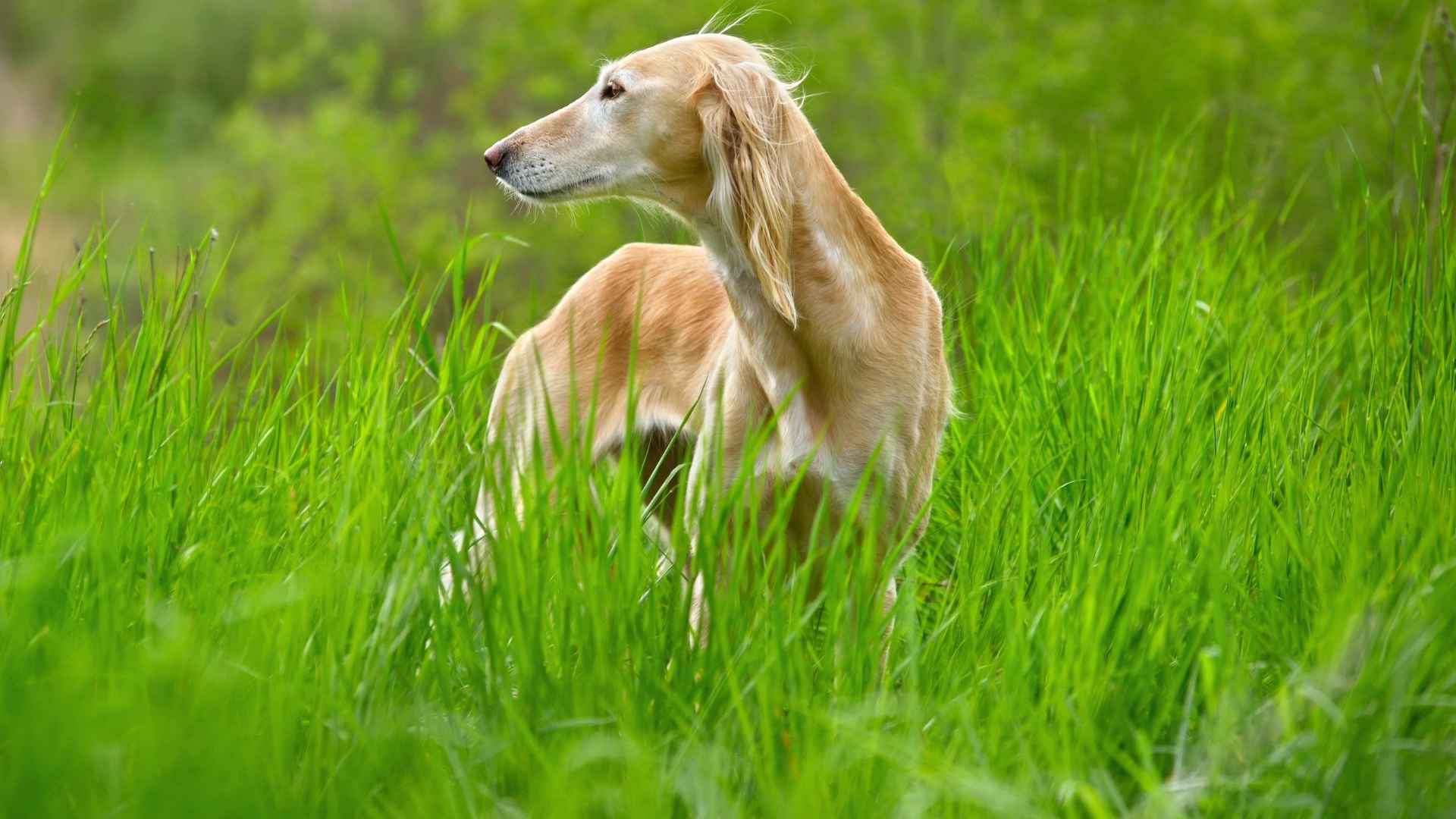Ever wondered where our beloved furry companions came from? Long before modern pet dogs stole our hearts (and our couches), their ancestors roamed wild, surviving on instincts and raw strength. These early dogs weren’t just pets—they were partners in survival, bred for toughness, loyalty, and skills that made life easier for humans.
The earliest dog breeds weren’t about cute appearances or trendy colors. They had one job—helping humans thrive. Whether it was hunting, guarding, or herding, these dogs were built for a purpose. Over generations, they adapted to extreme environments, developed unique abilities, and became indispensable to the people who relied on them.
But how did these dogs go from rugged survivalists to the lovable companions we know today? The story of early dog breeds is a fascinating journey of evolution, selective breeding, and an unbreakable bond between humans and canines. Let’s dig into their origins and discover what made them so special.
Early Dog Breeds
1. Akita Inu
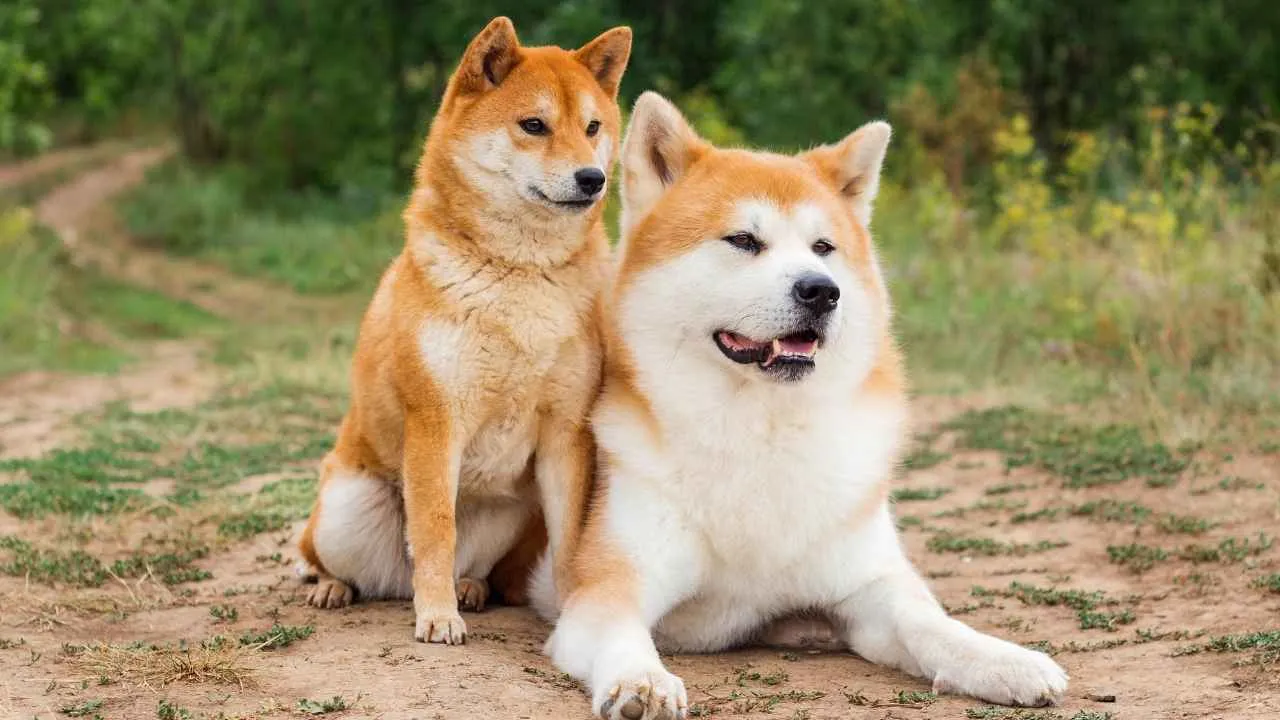
Originating in Japan centuries ago, this breed was never meant to be a simple household pet. It was a warrior’s companion, a hunter of large game, and even a guardian of royalty. With its powerful build and unshakable spirit, the Akita Inu was designed for survival in harsh conditions, making it one of the most formidable early dog breeds.
The Akita Inu had a serious job—hunting wild boar, deer, and even bears. These dogs weren’t just tough; they were fearless, often working alongside hunters to bring down animals much larger than themselves. Their keen instincts and strong wills made them indispensable in Japan’s mountainous regions, where only the strongest could thrive.

This breed isn’t overly friendly with strangers, but when it bonds with its owner, the loyalty and devotion are unmatched. Ever heard the story of Hachikō, the Akita Inu who waited for his deceased owner at a train station for nearly ten years? That’s a testament to this breed’s devotion.
Physically, the Akita Inu is a powerhouse. Its thick double coat provides insulation against freezing temperatures while its muscular frame allows it to navigate rough terrain effortlessly. Those signature curled tails? They help to maintain balance in deep snow and harsh landscapes. Every part of this breed is built for endurance and resilience.
But what really sets the Akita Inu apart from other early dog breeds is its strong-willed nature. This isn’t a breed for the faint of heart. According to the AKC, they’re intelligent but independent, which means they don’t follow commands blindly. That’s why training them requires consistency, patience, and a firm approach.
Fun Fact: In Japan, Akita Inu puppies are often given as gifts to wish someone good health, happiness, and a long life. Who wouldn’t want a fluffy symbol of good fortune?
2. Greenland Dog
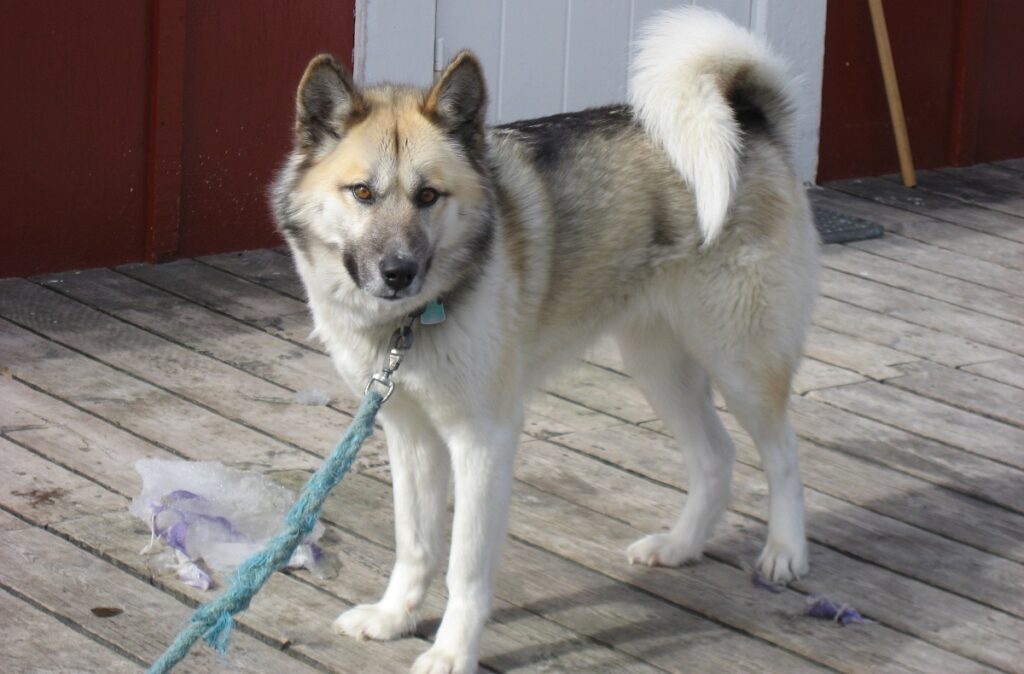
This breed wasn’t bred for cuddles or fancy dog shows—it was built to survive some of the harshest conditions on Earth. Originating thousands of years ago in the Arctic, the Greenland Dog was vital to pulling sleds, hunting seals, and even defending against polar bears.
Greenland Dog was designed for brutal Arctic conditions. Its thick double coat, consisting of a dense underlayer and a harsh outer layer, provided insulation against icy winds. But it’s not just the fur that made this breed a survivor—its immense stamina and raw power allowed it to travel long distances across frozen landscapes without tiring.
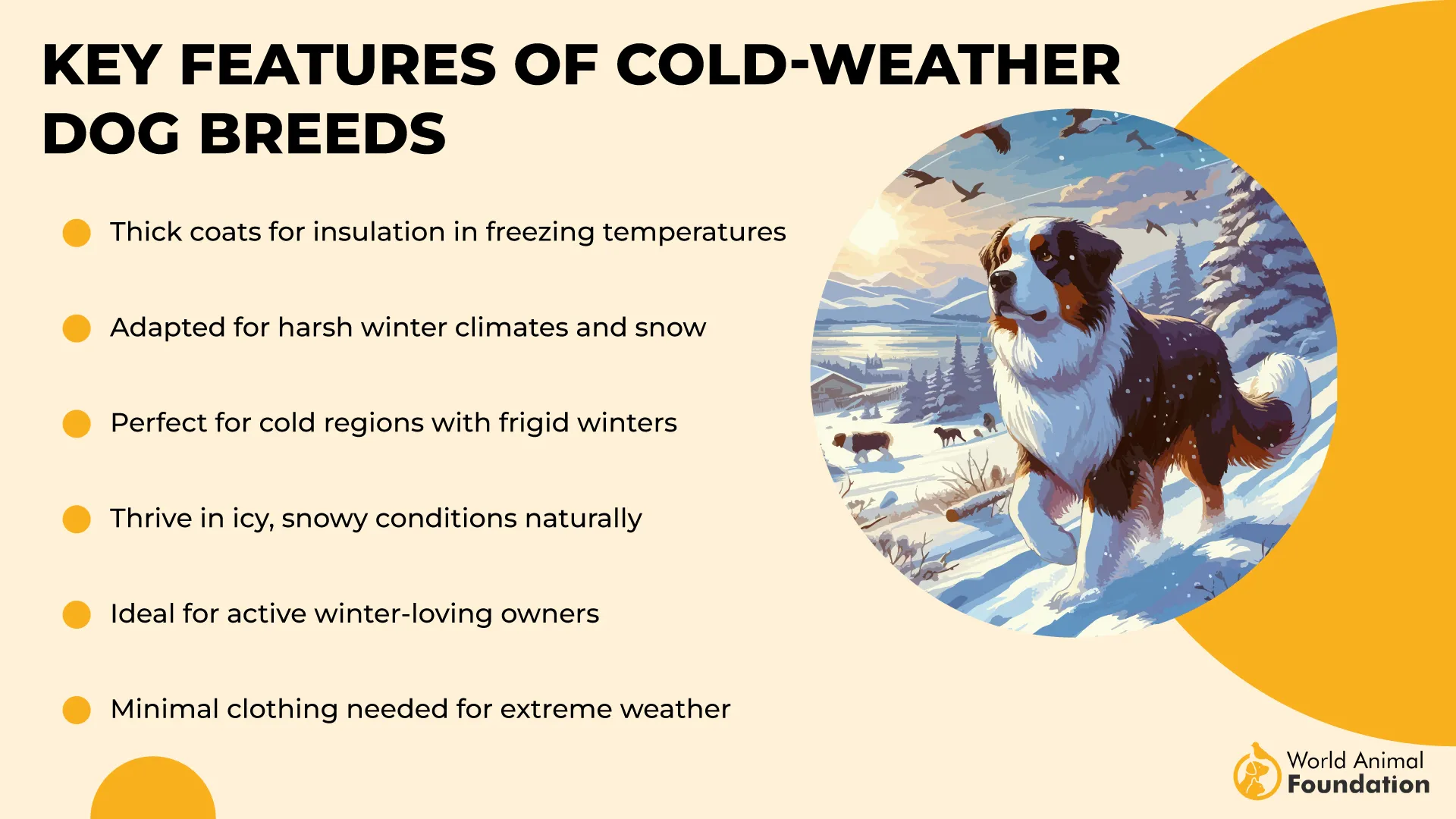
If you think Huskies are strong, Greenland Dogs take things up a notch. These beasts have been used in polar expeditions for centuries, helping explorers conquer the most unforgiving terrains on the planet. From pulling sleds packed with supplies to tracking down seals in the ice, they weren’t just helpful—they were essential.
Greenland Dog has a pure, untamed spirit. Unlike modern sled dogs, which have been bred for trainability, Greenland Dogs still have that wild edge. According to Purina, they’re highly independent, fiercely loyal to their pack, and not exactly eager to please humans for the sake of it. In short, they don’t do tricks for treats—but they will risk their lives for the ones they trust.
Would a Greenland Dog fit into a typical household? Probably not. They need space, purpose, and structure—not just a fenced yard and a daily walk. Without a job to do, their high energy levels can turn into destructive behavior. But in the right hands, these dogs are unstoppable forces of nature.
3. Afghan Hound

With its long, silky coat, slender build, and piercing gaze, this breed isn’t just a stunner—it’s a living relic of ancient times. Thousands of years ago, in the harsh terrains of Afghanistan, these dogs weren’t just developed for beauty; they were elite hunters, capable of taking down fast and agile prey in the unforgiving mountains and deserts.
Afghan Hounds have an independent hunting instinct, says Purina. They were prized by nomadic tribes for their ability to track, chase, and capture game without needing commands. Their speed and agility allowed them to outrun gazelles and deer, making them one of the most prized hunting companions in history.
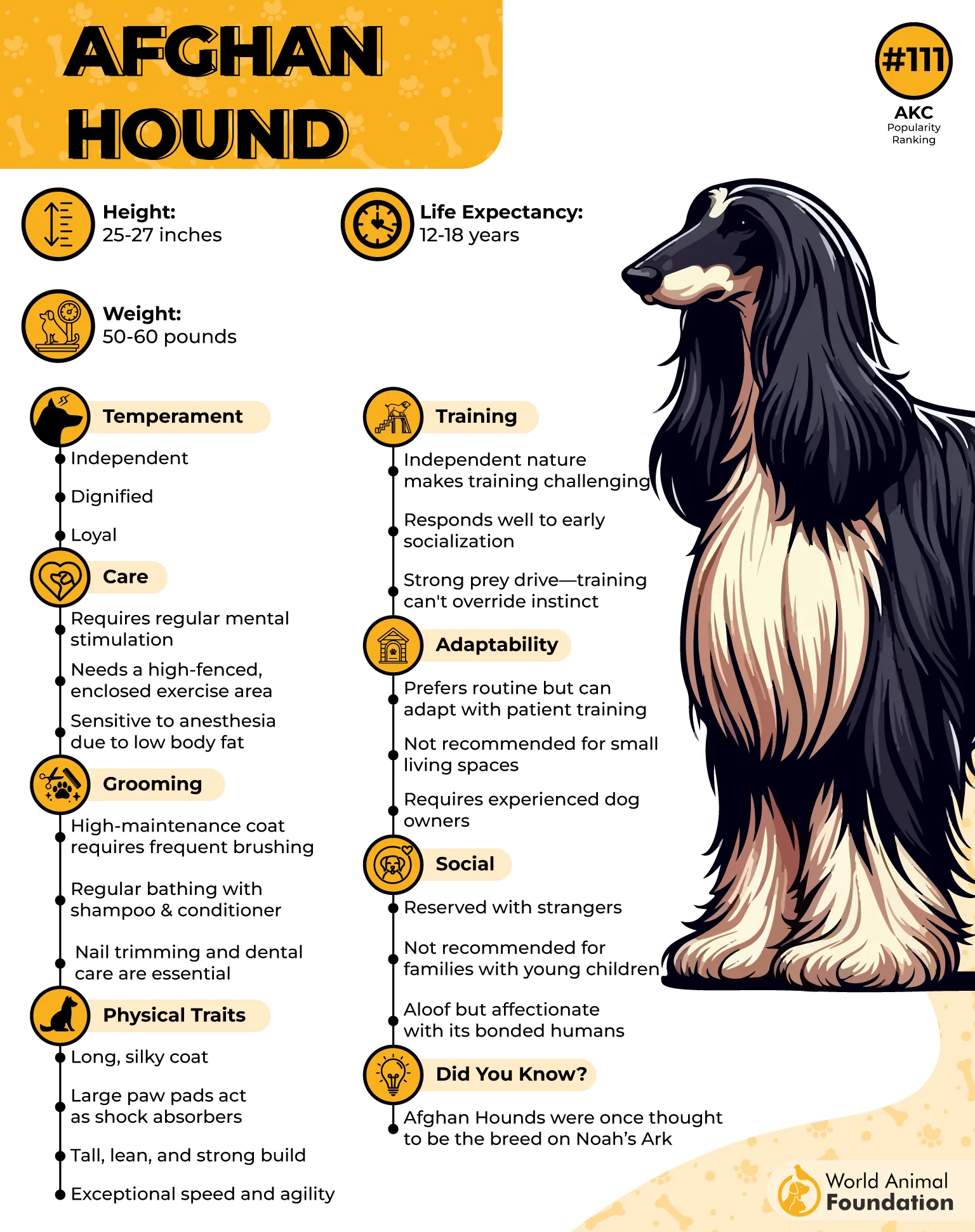
Afghan Hound’s signature coat has served as protection against the harsh climate of the Middle East and Central Asia. The long, flowing fur shielded them from extreme temperatures, whether the scorching desert sun or the bitter mountain cold. But that same luxurious coat means they need serious grooming—this is not a low-maintenance dog!
Speed is another defining trait of the Afghan Hound. These dogs can reach speeds of up to 40 mph, making them one of the fastest breeds on Earth. That’s the kind of speed that made them such effective hunters in the past. Even today, Afghan Hounds excel in lure coursing and sprint-based sports.
Do Afghan Hounds make good pets? It depends. They thrive in environments where they can run freely, explore, and be admired for their elegance. They’re not the best choice for first-time dog owners, but for those who appreciate their unique temperament, they’re loyal, loving, and endlessly fascinating companions.
4. Greyhound
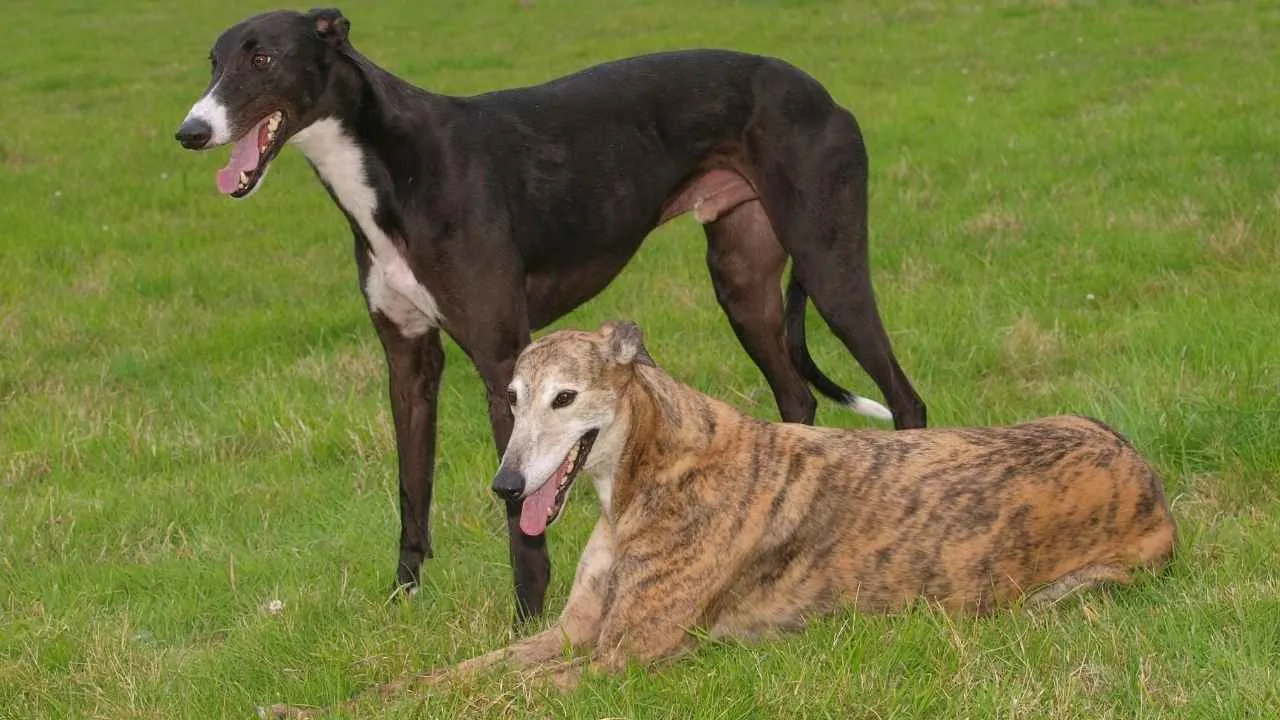
Meet the Greyhound, the ultimate speedster of the dog world. This breed has been around for over 4,000 years, with images of sleek, long-legged dogs appearing in Egyptian tombs and Roman artifacts. From hunting to racing, Greyhounds have always been prized for their unmatched speed and grace.
Ever wonder why Greyhounds were so revered in ancient times? It’s their incredible ability to chase down prey. Bred as hunting dogs, they were used to track and capture fast-moving animals like hares and gazelles. Unlike scent hounds, Greyhounds rely on sharp eyesight and lightning-fast reflexes, spotting movement from extreme distances and taking off like a rocket.
Their unique body structure is designed for speed, which makes them look different from other dogs. They have a flexible spine, long limbs, and a large heart capacity, all of which contribute to their elite-level athleticism. But their slender frame doesn’t mean they’re fragile—they’re built for endurance and agility.
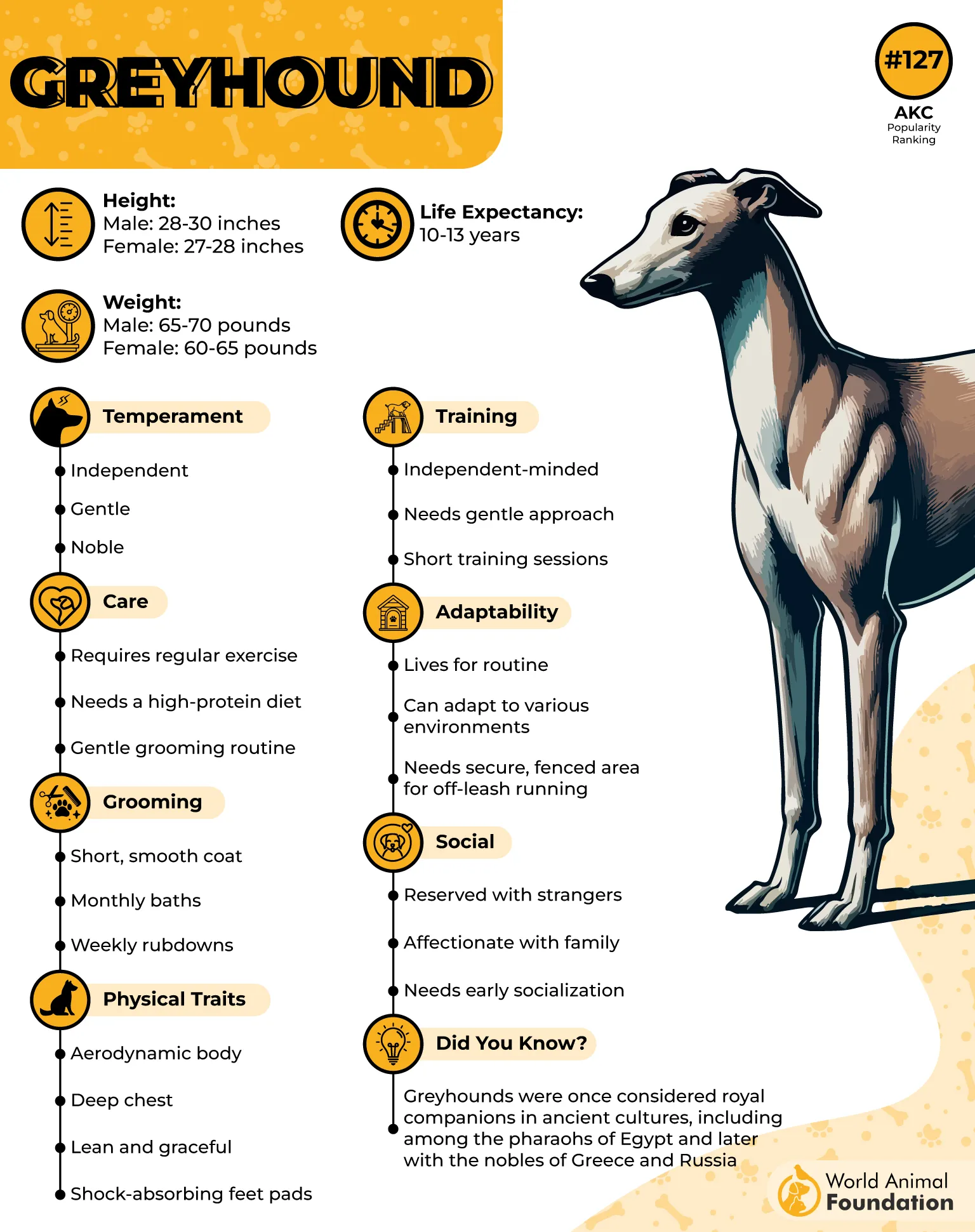
Are Greyhounds easy to train? Well, yes and no. They’re smart, intelligent, and eager to please, but their independent nature means they sometimes get distracted—especially if something catches their eye if a Greyhound sees a small animal running, good luck stopping them!
Despite their ancient hunting background, Greyhounds are surprisingly gentle, affectionate, and noble, says the AKC. Greyhounds are not like high alert working dogs; they are calm, quiet, and even shy. They’re the kind of dog that loves lounging in the sun as much as they love a good sprint.
5. Basenji

This unique breed originates from the dense jungles of Central Africa, where it was prized by ancient tribes for its ability to hunt without making a sound. Instead of barking, Basenjis produce a yodel-like sound called a “barroo,” thanks to their uniquely shaped larynx.
Why did ancient hunters rely on the Basenji? Simple: stealth and intelligence. Unlike other hunting dogs that rely on brute strength, the Basenji is nimble, alert, and cunning. Their keen eyesight and sharp sense of smell helped them locate prey, while their cat-like agility allowed them to chase and corner animals effortlessly.
Quick Fact: Basenji has an uncanny resemblance to ancient Egyptian dog breeds. If you’ve ever seen paintings or sculptures of slender, curled-tailed dogs in Egyptian tombs, they look just like modern Basenjis! Some historians believe that pharaohs once owned dogs similar to the Basenji, proving how ancient this breed truly is.
Think all dogs have a “doggy smell”? Not the Basenji! This breed is famous for being odorless and having an almost feline-like grooming habit. They constantly clean themselves, much like cats. Their short, fine coat also helps keep them low-maintenance, making them one of the cleanest early dog breeds.
Another quirky trait? Basenjis don’t like water! Unlike Labradors or other water-loving breeds, Basenjis will go out of their way to avoid puddles, rain, and especially baths. This is likely due to their origins in warm, dry climates where they didn’t need to deal with much water.
Despite their independent streak, Basenjis are incredibly loyal and affectionate with their families, states AKC. However, they aren’t overly clingy—think of them as the “cat of the dog world”. They’ll happily entertain themselves but also love snuggling up when they feel like it.
6. Saluki
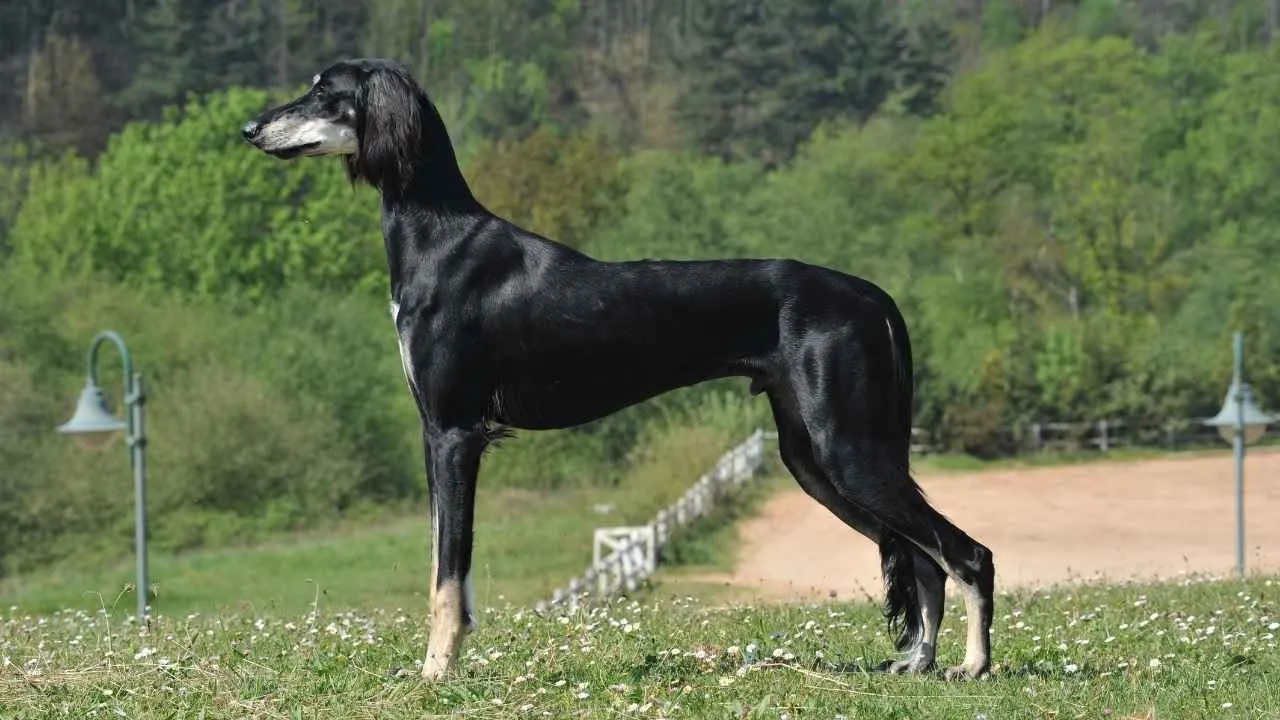
Saluki is an ancient breed that has been around for over 5,000 years! These dogs were the prized hunters of Middle Eastern royals, known for their incredible speed and endurance. In fact, Salukis were once used to chase down gazelles, which tells you just how fast and powerful they really are.

But the Saluki isn’t just about speed—it’s a breed deeply woven into history. Ancient Egyptian tombs are decorated with Saluki-like figures, proving their presence in pharaohs’ courts. Even Alexander the Great is said to have had dogs resembling Salukis, using them for hunting and companionship.
They have sharp eyesight and unmatched stamina. Salukis are pure sighthounds, meaning they spot prey from miles away and chase it down with explosive speed. They were built for the open desert, where their lightweight frame and deep chest allowed them to run long distances without tiring.
Despite their aristocratic appearance, Salukis are independent and tough. Salukis are highly adaptable, able to live and work in any climate, says the AKC. They were bred to survive in harsh desert conditions, so they’re incredibly resilient. Their short, fine coat helps keep them cool in the heat, while their feathered ears and tail protect against the sun and sand.
These dogs have a strong prey drive, meaning they’ll chase anything that moves. Squirrels, rabbits, even a plastic bag blowing in the wind—if it moves, they’re after it! This makes them incredible hunting dogs but also a challenge for modern pet owners. A Saluki off-leash in an open space is a blur of speed that’s nearly impossible to catch!
7. Tibetan Mastiff

Meet the Tibetan Mastiff, a dog so massive and powerful that it was bred to guard livestock, entire villages, and even monasteries from predators like wolves, leopards, and bears. TMs can stand 26 inches at the shoulder and weigh well over 100 pounds, says AKC. This breed is a force of nature, with a thick, dense coat that protects it from extreme cold and an independent personality.

The origins of the Tibetan Mastiff are as mysterious as the Himalayas themselves. Believed to be one of the oldest working breeds, they were bred by Tibetan monks and nomadic tribes to be fierce protectors. In Tibet, they weren’t just dogs—they were sacred guardians, watching over entire settlements.
What makes the Tibetan Mastiff an unmatched protector? It’s all about instincts. Unlike modern guard dogs that rely on training, this breed is naturally territorial, independent, and highly intelligent. If they sense a threat, they act on their own, without waiting for commands.
Physically, they’re built like a fortress on four legs. With males reaching up to 160 pounds (73 kg) and standing over 2.5 feet tall, they are one of the largest and most powerful dog breeds. Their thick mane-like fur around the neck serves as armor against predators, preventing bites to their throat in case of an attack.
At night, their true instincts kick in. Tibetan Mastiffs are naturally nocturnal. In their native Tibet, this made them excellent nighttime guardians, keeping villages safe while the humans slept. Even today, owners notice their Tibetan Mastiffs being calm and relaxed during the day but highly vigilant at night.
8. Chow Chow

The Chow Chow’s roots go back over 2,000 years; that makes them one of the oldest dog breeds in the world. Originally bred in China, they were prized by emperors, nobles, and even warriors. These dogs were versatile workers, serving as guardians, hunters, and even companions to royalty. Some historical records suggest that Chinese emperors kept thousands of Chows in their royal kennels.
In ancient China, they were used as palace guard dogs, standing watch over treasures and royal homes. Even today, they have a strong territorial instinct and can be wary of strangers. If a Chow senses something suspicious, they won’t bark excessively—but they’ll stand their ground and let their presence do the talking.
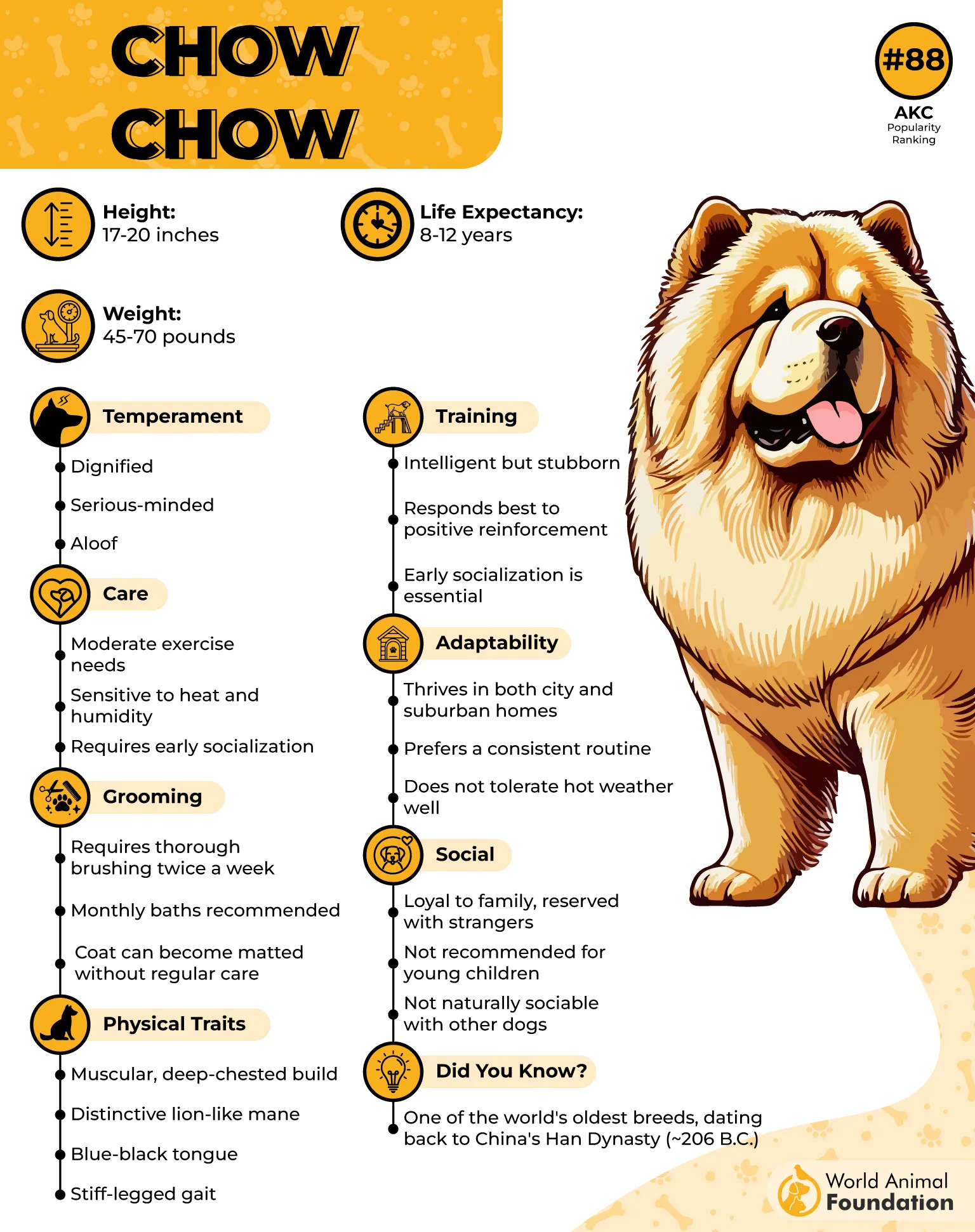
Physically, Chows are built like sturdy, compact tanks, says WebMD. They weigh between 45-70 pounds and have a thick double coat that makes them look even bigger. But their most famous feature? That blue-black tongue! Legend says that when the gods painted the sky, a Chow Chow licked up some of the colors, and that’s how their tongues got their unique shade.
One thing to remember about these fluffy lions? Socialization is key. Since Chows can be aloof and protective, they need early exposure to different people, environments, and experiences to prevent them from becoming overly reserved. They might not be the life of the party, but they should be calm and confident in any situation.
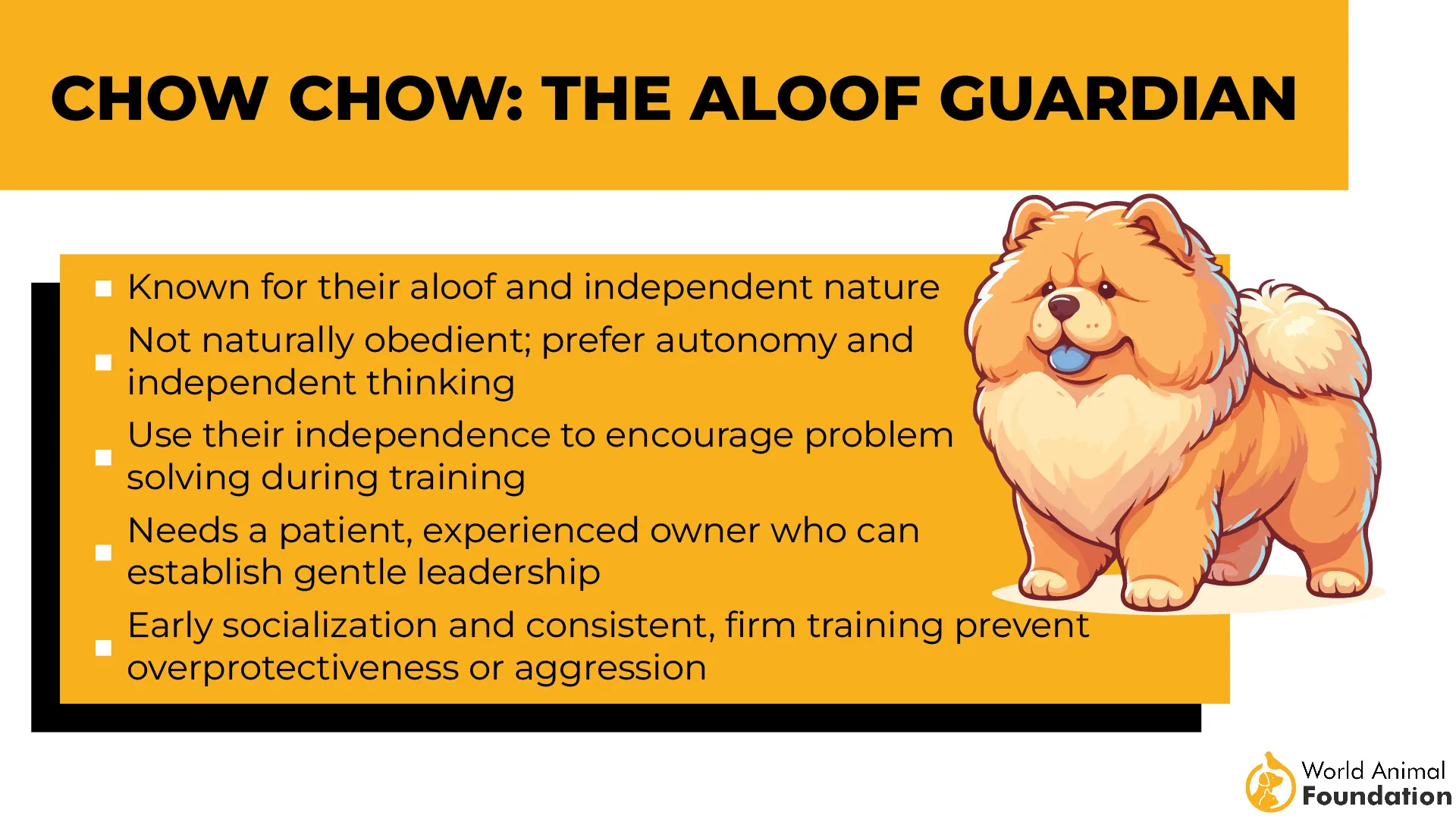
Fun Fact: The Chow Chow is one of the few ancient breeds that remains genetically close to wild wolves, despite their teddy bear-like appearance. Beneath all that fluffball is a dog with deep historical roots and an unshakable spirit!
9. Poodle
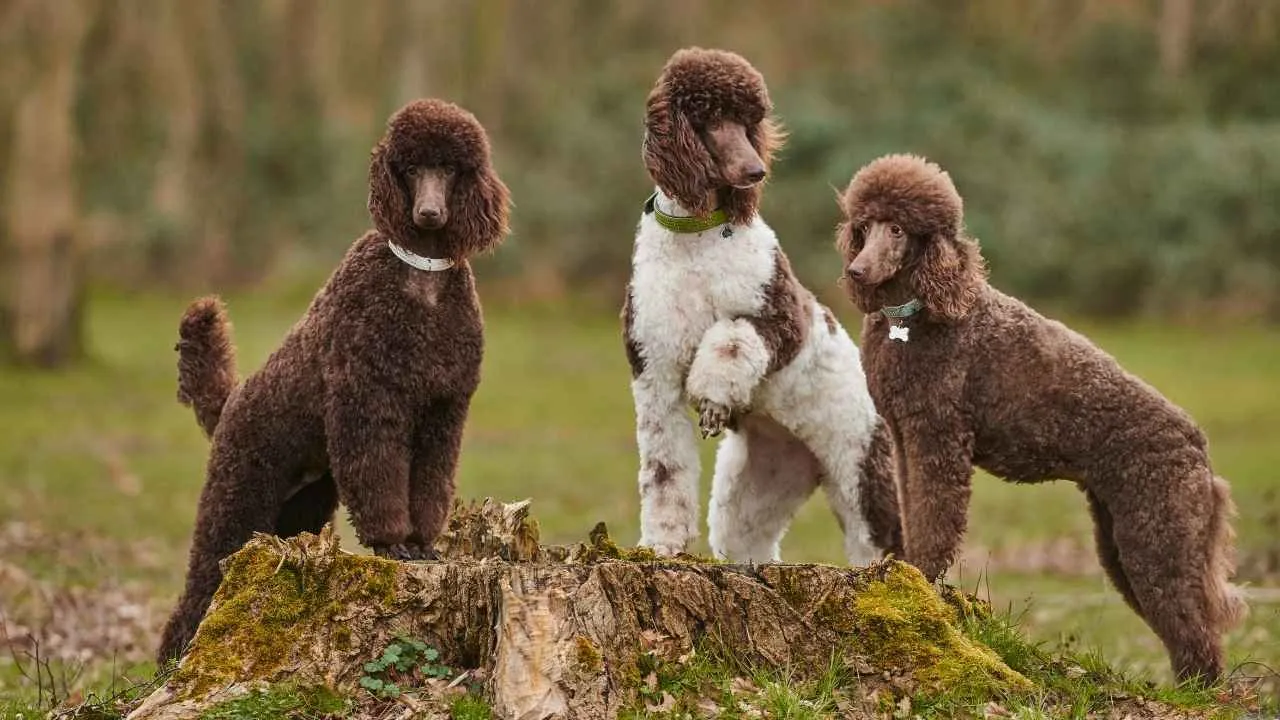
The Poodle isn’t just a pretty face—it’s one of the most intelligent, versatile, eager, athletic, and wickedly smart dog breeds, says AKC. You might picture them as luxurious show dogs, but these curly-coated companions were originally bred for hard work. Beneath that fancy exterior, there’s a highly skilled, athletic, and incredibly smart dog.
Poodles come in three sizes: Standard, Miniature, and Toy. But they share the same sharp mind and boundless energy. The Standard Poodle is the original, dating back hundreds of years. They were so good at retrieving that hunters across Europe relied on them for their strength, intelligence, and swimming ability.
Their curly, dense fur isn’t just for looks—it’s water-resistant! This was a major advantage for their original retrieving job. And those famous Poodle haircuts? They actually started as a practical trim to help them swim better while keeping their joints warm in cold water. So, the next time you see a Poodle with pom-poms, just know—it’s not just fashion; it’s functional history!
Let’s talk brains. The Poodle isn’t just smart—it’s one of the most intelligent dog breeds in the world. They learn commands faster than almost any other breed and can master tricks, agility courses, and advanced obedience training with ease.
One of the biggest perks of having a Poodle? They don’t shed much! Their curly coat traps loose hair, making them one of the most hypoallergenic dog breeds. But that also means they need regular grooming to prevent matting. If you’re not up for frequent brushing or professional trims, a Poodle might keep you busier than you expect!
Conclusion
Early dog breeds have played a crucial role in human history, evolving from the gray wolf into distinct breeds that served as hunting dogs, guard dogs, and loyal human companions. Some of the most ancient dog breeds date back thousands of years, with cave paintings and genetic research confirming their existence alongside early civilizations. Ancient Egypt, the Middle East, and Great Britain all had their own domesticated dogs, bred for hunting wild boar, protecting family members, and even guarding monasteries. Many of these ancient breeds, like the Afghan Hound, Basenji, and Tibetan Mastiff, are still recognized by the American Kennel Club and other kennel clubs today.
Among the oldest dog breeds, some were bred for specialized tasks, such as the Alaskan Malamute and Siberian Husky, which served as sled dogs for the Inuit people, while the Shar Pei and Shiba Inu excelled at hunting small game. The Canaan Dog, an ancient primitive dog from the Middle East, is one of the first domesticated dogs used for herding and protection. Other notable breeds include the Akita Inu, American Akita, and Chow Chow, known for their black tongue and independent nature.
In today’s world, these early dog breeds continue to be valued as family pets and working dogs. Whether as highly trainable hunters like the Greyhound and Hound, or as affectionate lapdogs like the Shih Tzu and Chihuahua, their unique traits and adaptability have ensured their survival across thousands of years. Research suggests that these breeds are still closely related to their wild ancestors, such as the Canis lupus, making them an essential part of canine history.


